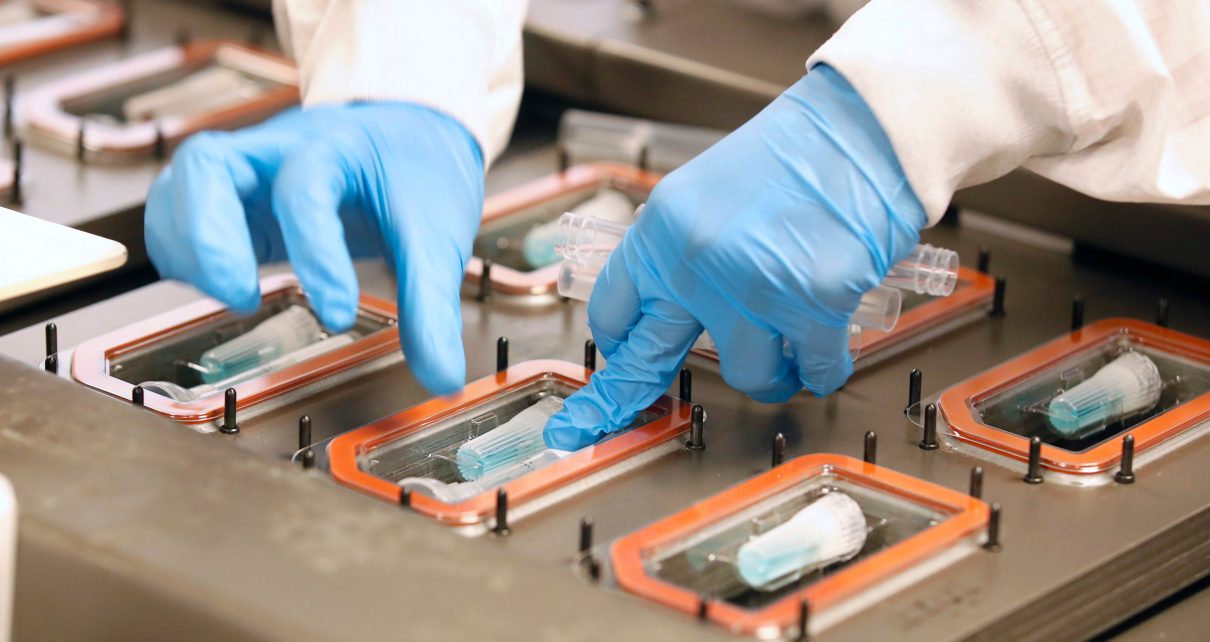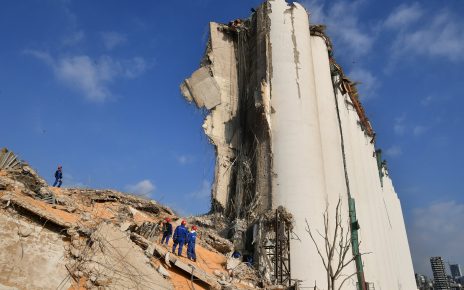The items below are highlights from the free newsletter, “Smart, useful, science stuff about COVID-19.” To receive newsletter issues daily in your inbox, sign up here.
David Tuller at Kaiser Health News reports that saliva tests for SARS-CoV-2 are catching on in the U.S., but only represent a “small percentage of the more than 900,000 tests conducted daily on average at the end of September.” A University of Illinois chemist quoted in the 10/6/20 story says of saliva tests, “You don’t need swabs, you don’t need health care workers, you don’t need [chemicals to stabilize spit-samples], and you don’t need RNA isolation [extraction] kits.”
Meanwhile, two companies have abandoned each of their efforts to develop at-home saliva tests for SARS-CoV-2 antigens (antigen tests look for viral proteins or structures that provoke an immune response, not for pieces of the virus’s genetic material, like the tests in previous item), reports Katherine J. Wu at The New York Times (10/1/20). The story describes various ongoing efforts to develop saliva tests for the virus. “There’s still no consensus on how well saliva works for detecting the coronavirus compared with the fluids obtained by nose swabs,” Wu writes.
A project called covidestim out of the the Yale School of Public Health publishes an interactive visualization of new SARS-CoV-2 infections in the U.S. per 100,000 people over time. A reader drew my attention to a 10/1/20 tweet about the project by Howard Forman of the Yale School of Management. Updated daily based on a statistical model that yields real-time estimates of the epidemic’s spread in the U.S., the dark purple areas on the page’s U.S. map show low infection rates, while the brighter orange and yellow areas have higher infection rates. Forman writes that the map shows “how small areas matter more than geographic or political boundaries. There are hot and warm spots in most states.” The page also features graphs illustrating infections per 100,000 and estimated infection counts for each U.S. state over time, from mid-March to the present.
Adults aged 65 to 80 are most affected by COVID-19 but older adults are excluded from more than half of Phase 3 experiments on possible vaccines and treatments for COVID-19, concludes a study published 9/28/20 in JAMA Internal Medicine that Pratibha Gopalakrishna covered 9/30/20 at STAT. The analysis focuses on experiments indexed on Clinicaltrials.gov, a registry for experimental drug and treatment studies that are funded by the U.S. National Institutes of Health among others.
Results published in the New England Journal of Medicine show that Moderna’s vaccine against SARS-CoV-2 appears to be safe in older adults and provokes an immune response similar to that seen in younger adults, reports Julie Steenhuysen at Reuters (10/1/20). The safety study, an extension of Moderna’s Phase 1 vaccine experiment, involved “40 adults aged 56 to 70 and 71 and older,” Steenhuysen writes. A high-dose version of the vaccine candidate currently is undergoing a Phase 3 study to assess effectiveness and safety, the story states. Phase 3 studies can involve tens of thousands of subjects.
Concerns about U.S. political interference in the approval process for eventual vaccines against SARS-CoV-2 are well-founded, health experts tell Kaiser Health News (KHN), but several U.S. states’ plans to engage independent panels of experts to assess vaccines “may be misguided,” report JoNel Aleccia and Liz Szabo (10/7/20). The District of Columbia plans to convene such a panel, along with New York, California, Colorado, Michigan, Oregon, and West Virginia, according to the story. Any such work by states’ panels could undermine confidence in future vaccines, sources in the story state. The chair of the U.S. Centers for Disease Control’s Advisory Committee on Immunization Practices told KHN he has “not felt pressured” by the U.S. Centers for Disease Control, other government agencies, or pharmaceutical companies to make any particular recommendation. The story notes safeguards that could ensure that vaccine approvals adhere to standards set by the U.S. Food and Drug Administration.
A 10/2/20 essay by Melinda Wenner Moyer for The New York Times explains why a negative test for SARS-CoV-2 does not guarantee that one is not infected. An incubation period after infection can delay a positive result on a test for several days, Moyer writes. Ideally, wait three to four days after being exposed to someone with the virus before getting tested, the essay states. And negative results should be evaluated in the context of whether one has COVID-19 symptoms, how widely the virus is circulating in one’s community, and attendance at large gatherings, the story states.
Some research shows that cloth face-masks worn by members of the public reduce the risk of catching and spreading SARS-CoV-2 and possibly even the severity of infections, reports Lynne Peeples for Nature (10/6/20). But evidence is thin in places, particularly regarding the effectiveness of surgical and cloth masks, and some relevant findings are posted online in reports that have yet to be assessed by experts for flaws, Peeples reports. Stronger studies are under way, but some researchers disagree about the kind of evidence needed to prove the effectiveness of these face masks and about how the virus spreads, Peeples writes. The story cites a review of multiple study findings that “estimates that surgical and comparable cloth masks are 67% effective in protecting the wearer.” A virologist at Columbia University’s School of Public Health is quoted in the piece as saying, “There’s a lot of information out there, but it’s confusing to put all the lines of evidence together. When it comes down to it, we still don’t know a lot.” The director of the Center for Infectious Disease Research and Policy at the University of Minnesota says people should not trust cloth face-coverings to protect them from the virus when they are “in a crowded area,” the story states. Some good news: the wearing of face masks by members of the public seems to inspire people to do a better job at social distancing, the story suggests. And they underscore a shared responsibility.
You might enjoy this sped-up video tweeted on 10/8/20 by TJ Cooney of a halftime performance celebrating the 50th anniversary of the Apollo 11 moon landing (the original video can be found here).



